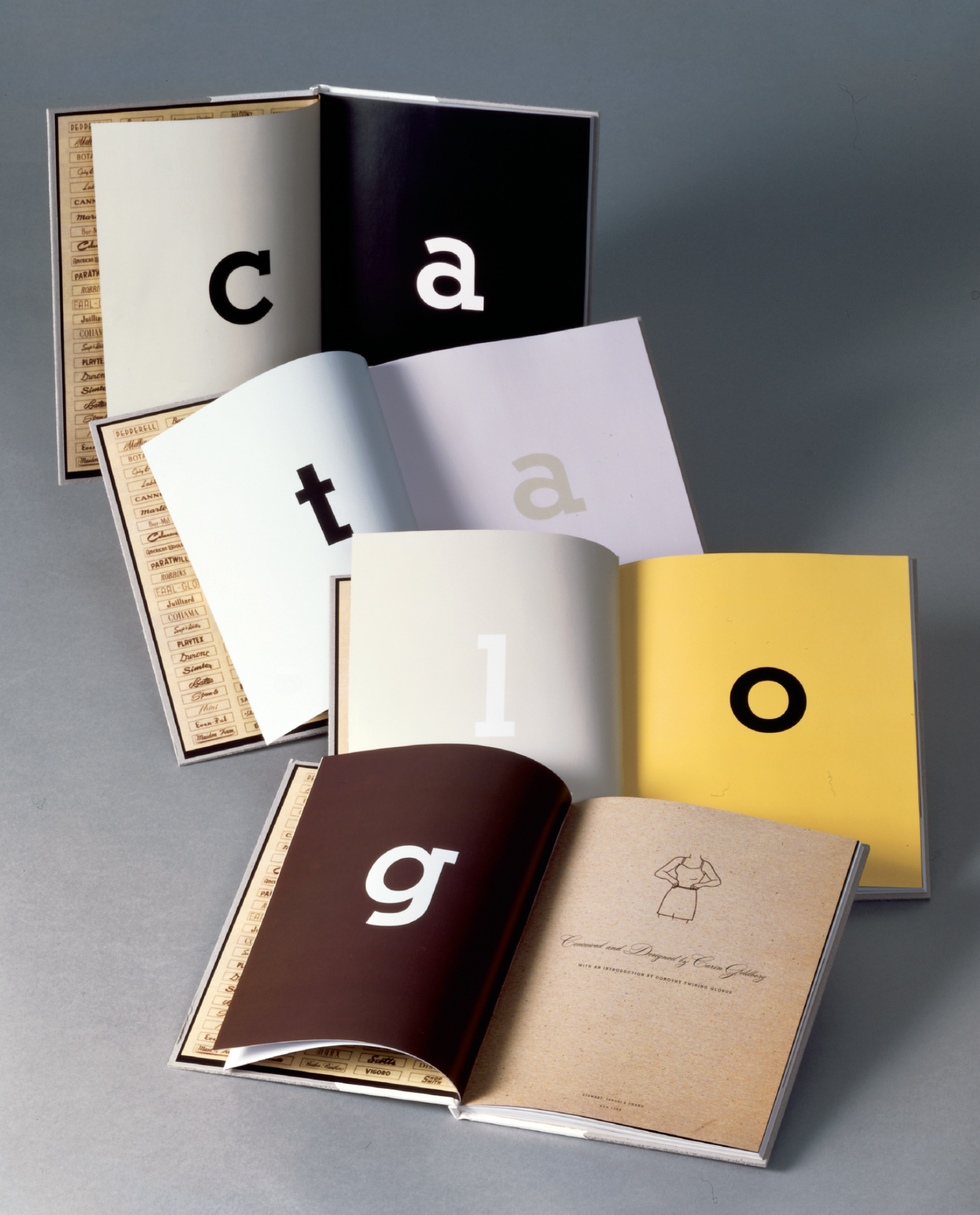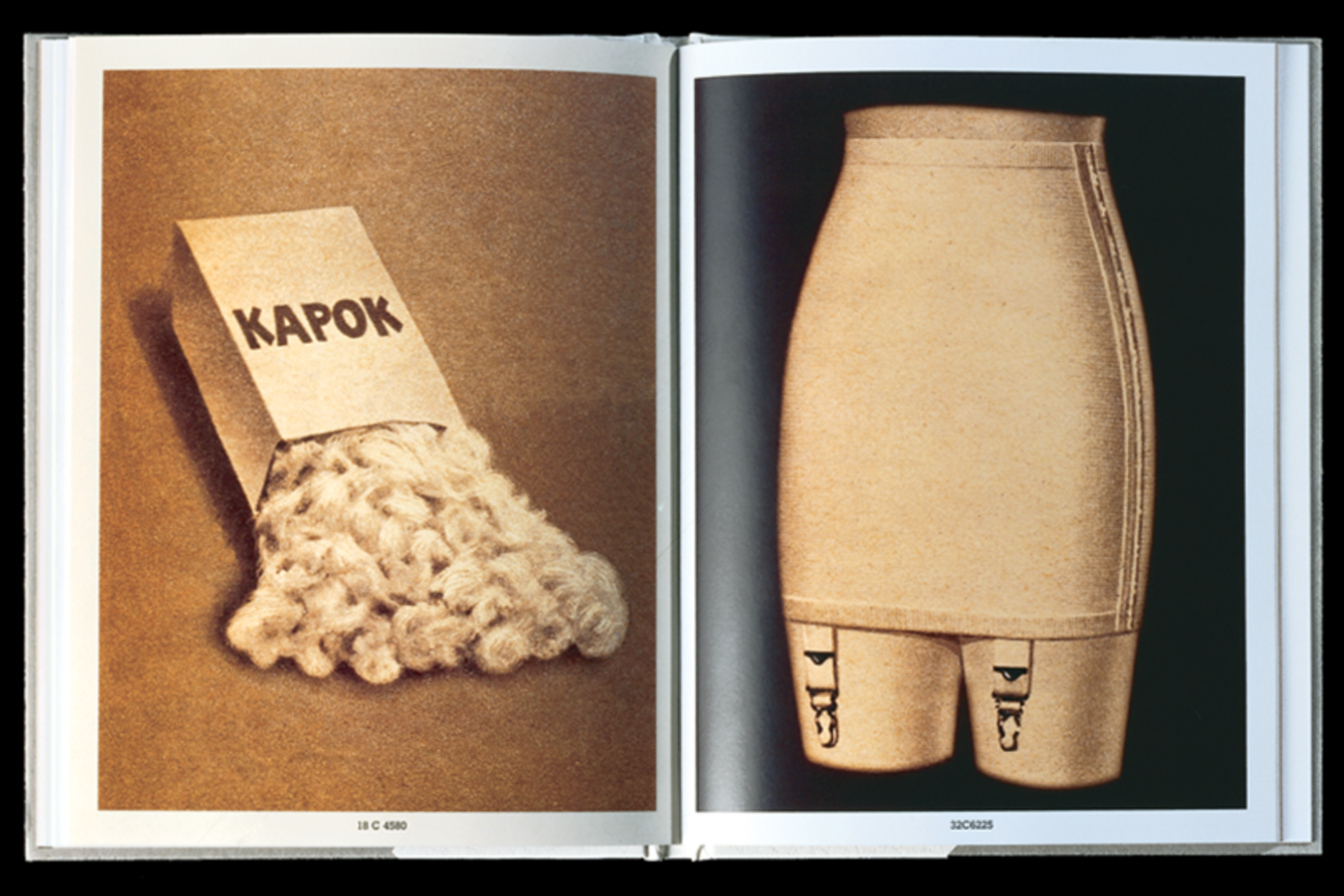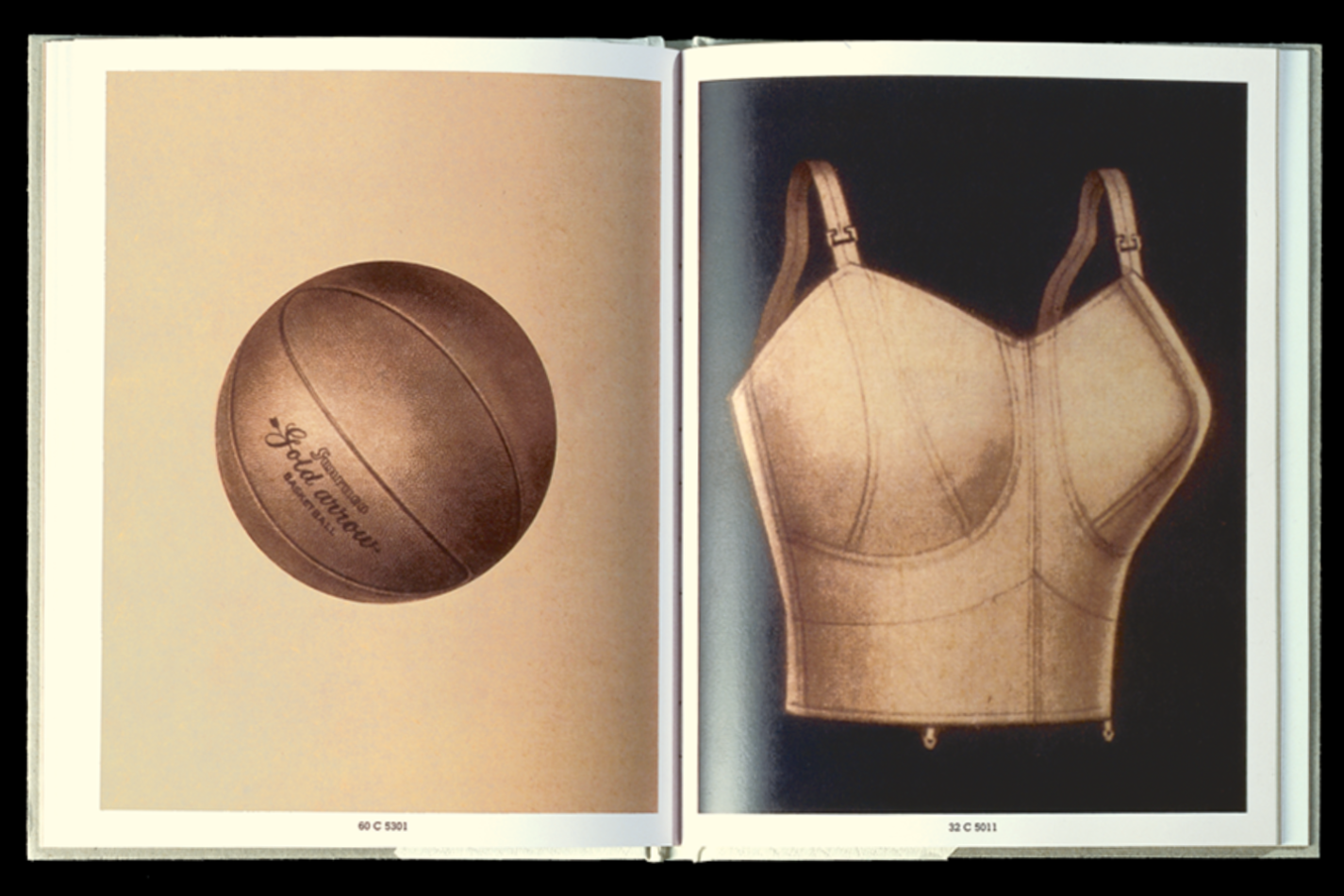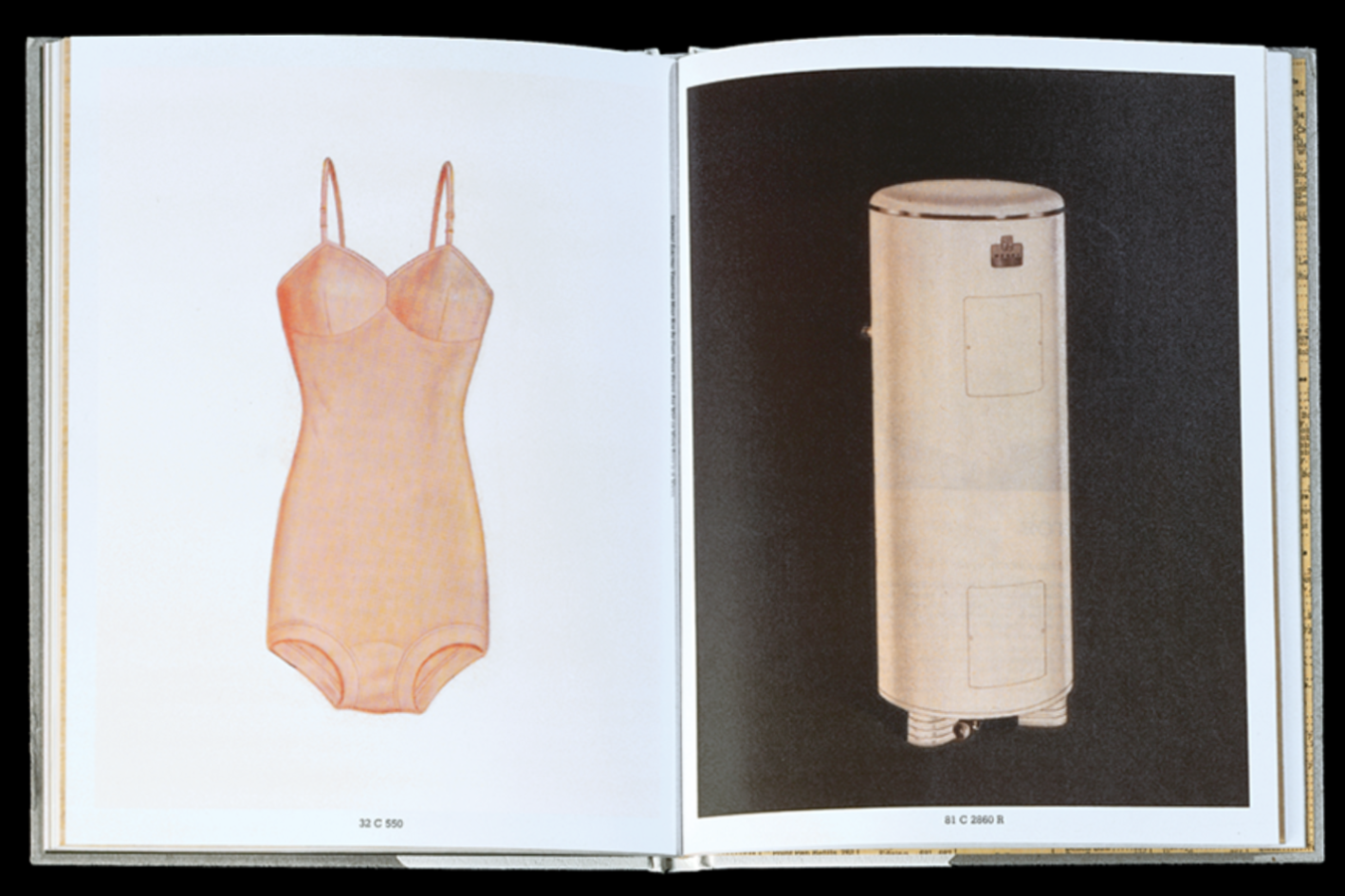Summer 2002
The book as dark, musty gallery
Catalog
Carin Goldberg, Stewart, Tabori & Chang, €18.48. Reviewed by Daniel Nadel
Graphic designer Carin Goldberg’s first book is a catalogue. Though at first glance it is reminiscent of the abstract picture books assembled in Tibor Kalman’s Chairman or Alan Fletcher’s recent The Art of Looking Sideways, Catalog, at just under 70 pages, has more in common with an artist’s book by Ed Ruscha than anything in the traditional design book market. While Kalman and Fletcher are telling concrete stories about people and ideas, Goldberg is not telling a linear narrative per se; instead she’s created a dark, musty gallery in book form.
Catalog is assembled from a winter 1951-52 consumer goods catalogue. Goldberg chose intriguing images of bygone everyday products – a wig, a girdle, and a toy man, for example.

Each object occupies a single page and is given equal weight and scale. The images are sequenced according to simple relations between shapes, and though it is book-ended by dresses, the sequence does not progress or lead in a single direction. Against the grainy backgrounds reproduced from the catalogue, these unmanipulated objects assume solid, sculptural forms; viewers can contemplate their curves, folds, and peculiar expressions, imagining their wearers, users and makers. But Goldberg breaks the contemplative spell by inserting catalogue numbers just below the objects, lest more poetically inclined viewers fly too far into the ether. After all, they are just consumer goods, fabric and wood like anything else. It’s on the page, encased in Goldberg’s faithful palette of greens, greys and browns, that they come alive.

The only reminder that this book is, in fact, a thing made for the publication-buying public is a bookish introduction by Dorothy Twining Globus, and of course, the author’s biography and acknowledgements. These additions detract from the illusion, but without them the material might have, for better or for worse, come unanchored. Certainly Goldberg’s sumptuous package design reinforces the mystery inside: studiously anonymous boards echoing bolts of uncut fabric around the spine, and raw cardboard on the rest of the space. Otherwise, a metallic title and ISBN label affixed to the front board, and a small silver authorial and publisher credit on the back are its only giveaways. Catalog succeeds at many levels: as an object of contemplation, a brief thought on art and commerce, and as a simply gorgeous piece of book design.
First published in Eye no. 44 vol. 11, 2002

Eye is the world’s most beautiful and collectable graphic design journal, published for professional designers, students and anyone interested in critical, informed writing about graphic design and visual culture. It is available from all good design bookshops and online at the Eye shop, where you can buy subscriptions, back issues and single copies of the latest issue.
